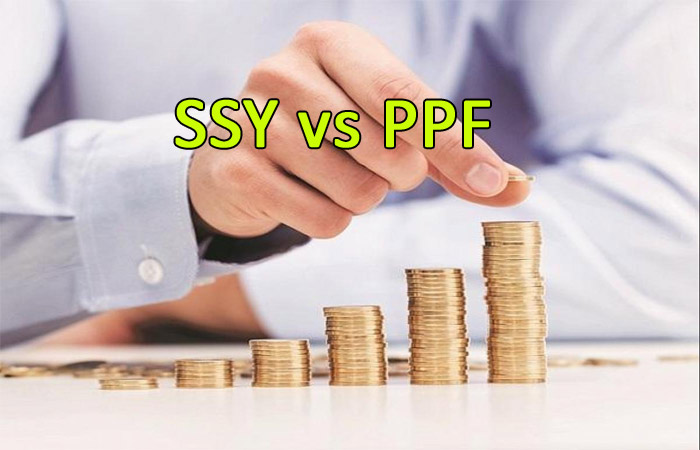Sukanya Samriddhi Yojana (SSY) vs Public Provident Fund (PPF): Which is better for a girl child?
The Government of India offers various types of schemes for a girl child and parents should know about them in detail. Moreover, they can choose the right one that fits the requirements of a girl child. Another thing is that it allows a girl to enhance her financial stability effectively to ensure peace of mind. Therefore, choosing the best scheme will make a girl child focus more on her financial goals significantly.
It is wise to gather the details of social security schemes online that will help to make the right decision. For example, Sukanya Samriddhi Yojana (SSY) is a long-term investment option meant for a girl child that gives ways to generate high returns. Apart from that, it comes with high- interest rates, which provide methods to generate more income. Similarly, the public provident fund (PPF) is a tax-free saving scheme available for a girl child that will help gain more advantages. Although both SSY and PPF are ideal for parents, they should evaluate their differences before investing money.
9 Major Difference between SSY vs PPF: Which one to select?
- Eligibility
- Interest Rates
- Deposit Limit
- Account Maturity
- Premature Termination
- Loan Facility
- Tax Benefits
- Transfer Facility
- Number of Accounts
1. Eligibility
Parents should compare SSY vs PPF features and other things that will help a lot to achieve goals to a large extent. The maximum age to open SSY is 10 years and for PPF is 18 years that will help ensure financial stability in life. Non-resident Indians are not eligible to open both accounts.
2. Interest Rates
The interest rates of both schemes will keep changing in every financial year and investors should consider checking the same from different sources. Currently, the rate of interest for SSY is 7.6%, and PPF is 7.1%, allowing investors to increase the value. Therefore, it is wise to make SSY investments before the 10th of every month and PPF investments before the 5th of every month.
3. Deposit Limit
The minimum deposit for SSY is Rs. 250, and the maximum deposit is Rs. 1.5 lakhs. For PPF, parents have to deposit a minimum of Rs. 500 and the maximum of Rs. 1.5 lakhs.
4. Account Maturity
The Sukanya Samriddhi Yojana scheme will mature when a girl attains 21 years. On the other hand, it allows a partial withdrawal of amounts after 18 years when it comes to education and other purposes. At the same time, the public provident scheme matures after 15 years, and parents can extend the scheme based on their choices. It allows partial withdrawal after the end of 6 years. However, it is wise to check whether such a facility is available in a bank or not.
5. Premature Termination
SSY allows premature closure only under special cases such as the death of the account holder. At the same time, PPF provides ways to close an account after the completion of 5 years under certain circumstances.
6. Loan Facility
Investors can avail of a loan facility in PPF that will help manage difficult situations in life with ease. Unfortunately, SSY doesn’t provide any loan facility for parents.
7. Tax Benefits
Both SSY and PPF schemes offer tax benefits to investors under section 80C of the income tax act,1961. At the same time, it is important to check with a bank or post office before opening an account.
8. Transfer Facility
Investors can transfer both SSY and PPF from a post office to a bank and vice versa in easy steps.
9. Number of Accounts
SSY allows parents to open a maximum of 2 accounts and a PPF account is eligible for only one person.
Read More: Difference between EPF and EPS
PPF is a better option for parents when they want to accumulate money for their daughter even after 21 years. SSY gives ways to yield high returns till a girl child turns 21 years. In PPF, a girl can deposit money once she starts to earn money after 21 years and can get the benefits for her future life. SSY is an option meant for parents who need an accumulated corpus for education and other purposes.
However, PPF provides the option to save money for a girl child with small amounts. Parents should determine which scheme is the best one for their daughter after doing complete research. It is always a good idea to diversify the investment portfolios with options that will help get the desired results. Investing heavy amounts in SSY can lead to various problems during emergencies. Instead, it is wise to keep a small portion in PPF, and other investments can do major wonders for a family.
What are the documents needed to open SSY and PPF?
Both accounts need address proof and ID proof during the opening process. At the same time, SSY requires the birth certificate of a girl child for age verification. PPF requires signature proof and two photographs while opening an account. Parents should also submit other documents as required by a post office or bank.
How to open SSY and PPF accounts?
Investors can open an SSY and PPF account in a nearby post office or a bank with the required documents. They should get an application form and fill the same carefully to minimize errors and other problems. It is necessary to check once or twice before submitting the application form to get quick approval.
Nowadays, both public and private banks offer PPF account opening facilities online that will save more time. However, those who want to open their account should follow the instructions, including terms and conditions. This, in turn, gives methods to get more ideas as soon as possible.
What are the best investment plans for a girl child in India?
The Indian government provides SSY, PPF, and other investment options for a girl child for her future life. However, it is necessary to select the best investment plan for a child’s future after weighing the pros and cons. Investors should also compare the differences between PPF vs SSY when they want to invest money for a girl child. Moreover, since the interest rates may vary in a year, one should evaluate them properly which will help get high returns.





























